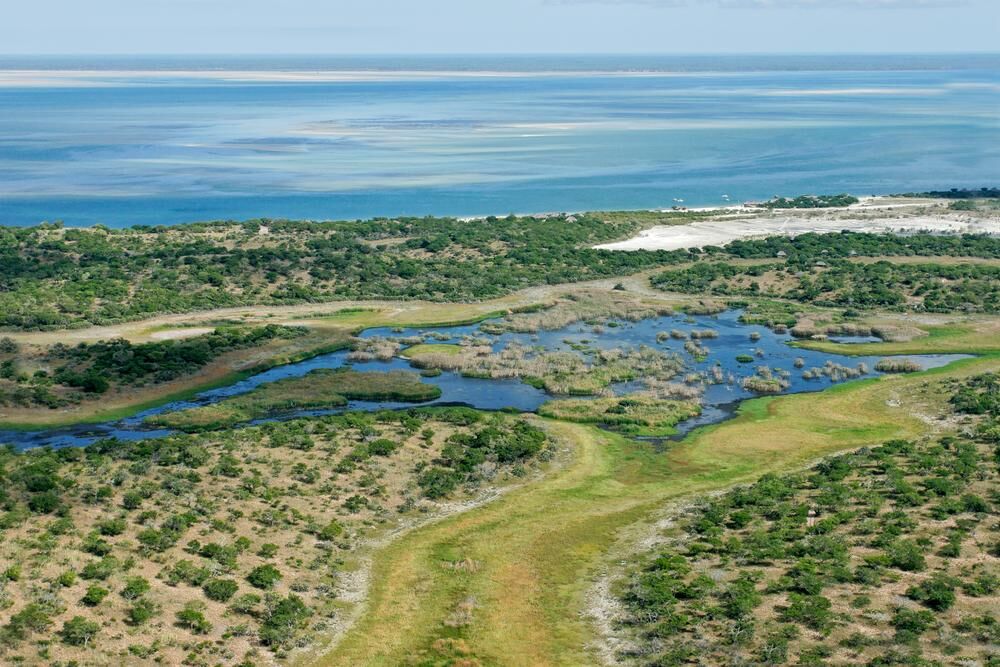
Hunting in Mozambique is always an exciting affair, especially when targeting an African plains game stalwart that is renowned for its keen senses and alert behavior. One of the five subspecies of the blue wildebeest (Connochaetes taurinus), Mozambique is home to the Nyassa wildebeest (C. t. johnstoni). Also known as Johnston’s wildebeest, Niassa, or Nyasaland wildebeest, this species is abundant in the area, allowing a challenging African hunt for those who are looking for an exhilarating, but testing wildebeest hunting expedition. This large, broad-shouldered antelope is scattered across most of southern Africa and is seen as a common species to add to an African plains game hunting safari. They are medium to large antelopes, with heavily built forequarters. Males weigh up to 370-600 pounds, while female blue wildebeest are lighter and smaller, weighing around 500 pounds. The antelope has a large head, with a broad snout, and the Johnson’s wildebeest has a thick white stripe across the snout. Males and females both have horns that curve inwards and upwards, with the male’s horns being thicker at the base. They are referred to as the “blue” wildebeest due to the sheen their coats have, shining a blueish shade. Their coats range in color from a deep bluish gray to a lighter gray and even a shade of grayish brown. There are dark vertical stripes that run from the neck to behind the rib cage. Their black mane runs down the back of the neck, ending with a horse-like tail. The Niassa region, with the largest game reserve in Mozambique, namely the Niassa Reserve, is renowned for its exceptional African plains game species, including the wildebeest. This reserve, at 16,216 square miles, has vast open plains and the untouched, wild nature of the reserve allows hunters to step back in time to Africa of old, tracking and hunting this resilient antelope. From April to October, Mozambique's dry season is the best time to enjoy wildebeest hunting. The weather is cooler, and the grass shorter, allowing the hunter better visibility amongst the vegetation.
Shot Placement when Blue Wildebeest Hunting
Excellent, on-point shot placement is a pre-requisite for this hardy, tough, and resilient African plains game antelope that has a reputation of “eating lead.” Be prepared for it to run, even with a well-placed shot. From the broadside, aim for one-third of the way up on the torso, vertically in line with the front leg. This placement will target vital organs and a shot to the heart and lungs is the best option for a humane and ethical wildebeest hunting trip.
What Caliber Rifle is used when Blue Wildebeest Hunting?
The blue wildebeest is often referred to as the “poor man’s buffalo” hinting at its tough and robust nature and the challenge it gives hunters when wounded. When wildebeest hunting, nothing less than a .270 should be considered. The hunter can consider a flat shooting .300 magnum loaded with 200 grains to 220 grains. Another consideration is a .308 with a bullet weighing 165 grains or more, but the hunter will need to ensure that shot placement is spot on. Larger caliber rifles such as a .338, .375, or a .416 Rigby will also work well, should the hunter prefer. Bow hunting in Mozambique is also legal should the hunter want to investigate this option with his African outfitter.
Search from our range of Hunts across various popular destinations in Africa.
Find A Hunt